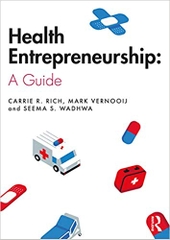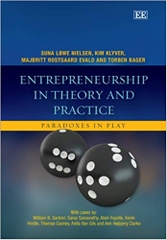-
-
-
Tổng tiền thanh toán:
-
-
Thông tin
-
Tìm sách theo yêu cầu
Ten years after the worldwide bestseller Good to Great, Jim Collins returns withanother groundbreaking work, this time to ask: why do some companies thrive inuncertainty, even chaos, and others do not? Based on nine years of research,buttressed by rigorous analysis and infused with engaging stories, Collins andhis colleague Morten Hansen enumerate the principles for building a truly greatenterprise in unpredictable, tumultuous and fast-moving times. This book isclassic Collins: contrarian, data-driven and uplifting.
- Link: http://www.amazon.com/Great-Choice-Uncertainty-Luck--Why-Despite/dp/0062120999
Product Details
- Hardcover: 320 pages
- Publisher: HarperBusiness; 1 edition (October 11, 2011)
- Language: English
- ISBN-10: 0062120999
- ISBN-13: 978-0062120991
- Product Dimensions: 9.1 x 6.1 x 1.1 inches
- Shipping Weight: 1.2 pounds (View shipping rates and policies)
- Average Customer Review: 4.4 out of 5 stars See all reviews (201 customer reviews)
- Amazon Best Sellers Rank: #2,907 in Books (See Top 100 in Books)
- #16 in Books > Business & Money > Biography & History > Company Profiles
- #50 in Books > Business & Money > Management & Leadership > Management
Editorial Reviews
Amazon.com Review
Jim Collins on the Writing Process 
When I first embarked on a career that required writing, I devoured dozens of books about the process of writing. I soon realized that each writer has weird tricks and idiosyncratic methods. Some wrote late at night, in the tranquil bubble of solitude created by a sleeping world, while others preferred first morning light. Some cranked out three pages a day, workmanlike, whereas others worked in extended bursts followed by catatonic exhaustion. Some preferred the monastic discipline of facing cinder-block walls, while others preferred soaring views.
I quickly learned that I had to discover my own methods. Most useful, I realized that I have different brains at different times of day. In the morning, I have a creative brain; in the evening, I have a critical brain. If I try to edit in the morning, I’m too creative, and if I try to create in the evening, I’m too critical. So, I go at writing like a two piston machine: create in the morning, edit in the evening, create in the morning, edit in the evening…
Yet all writers seem to agree on one point: writing well is desperately difficult, and it never gets easier. It’s like running: if you push your limits, you can become a faster runner, but you will always suffer. In nonfiction, writing is thinking; if I can’t make the words work, that means I don’t know yet what I think. Sometimes after toiling in a quagmire for dozens (or hundreds) of hours I throw the whole effort into the wastebasket and start with a blank page. When I sheepishly shared this wastebasket strategy with the great management writer Peter Drucker, he made me feel much better when he exclaimed, “Ah, that is immense progress!”
The final months of completing Great by Choice required seven days a week effort, with numerous all-nighters. I had naively hoped after writing Good to Great that perhaps I had learned enough about writing that this work might not require descending deep into the dark cave of despair. Alas, the cave of darkness is the only path to producing the best work; there is no easy path, no shorter path, no path of less suffering. Winston Churchill once said that writing a book goes through five phases. In phase one, it is a novelty or a toy; by phase five, it is a tyrant ruling your life, and just as you are about to be reconciled to your servitude, you kill the monster and fling him to the public. And so, exiting the caving blinking in the sunlight, we’ve killed the monster and hereby fling. We love this book, and have great passion about sharing it with the world—making all the suffering worthwhile.
A Q&A with Morten T. Hansen 
Q: How did you and Jim develop ideas together during the research?
Hansen: During our hundreds of research meetings—what we called “chimposiums” (as when two curious chimps get together), Jim and I probed the data, exchanged views, and debated vigorously. We didn't always agree, in which case we did some more analysis to get to the main findings we report in Great by Choice.
Q: Why did Great by Choice take nine years of effort?
Hansen: When Jim and I started out some nine years ago, we did not anticipate that it would take us this long, nor did we know what the results would be. We followed a simple principle—carry out the absolutely best research we could possibly do, no matter how long.
Q: Did you find what you expected, or surprises?
Hansen: The way we did the research was to explore why some companies attained great performance over the long-run while others did not. We did not start with any preconceived ideas and hypotheses about what made the difference. We let the data speak. What we found, and what we report in the book, surprised us a great deal. A few times we scratched our heads because we were so surprised, but that's what the data revealed.
Q: Did you have fun?
Hansen: Analyzing the data, debating, and arriving at some really interesting insights was a great deal of fun. It created joy in my life. It may not be everyone's idea of having a good time, but Jim and I always looked forward to our chimposiums. I hope you will enjoy Great by Choice as much as Jim and I enjoyed the research process!
Review
“A sensible, well-timed and precisely targeted message for companies shaken by macroeconomic crises” (Financial Times)
“Collins and Hansen draw some interesting and counterintuitive conclusions from their research….far from a dry work of social science. Mr. Collins has a way with words, not least with metaphor.” (Wall Street Journal)
Entrepreneurs and business leaders may find the concepts in this book useful for making choices to increase their odds of building a great company. (Booklist)
“Collins and Hansen draw some interesting and counterintuitive conclusions from their research….far from a dry work of social science. Mr. Collins has a way with words, not least with metaphor.” (Wall Street Journal)
Entrepreneurs and business leaders may find the concepts in this book useful for making choices to increase their odds of building a great company. (Booklist)
Most Helpful Customer Reviews
240 of 247 people found the following review helpfulBy Owen Jackson on October 14, 2011
Format: Hardcover Verified Purchase
In Collins' new book he relies on the method you've seen in previous books like Built to Last and Good to Great. What's different in this one is he selected companies not just on their status or explosive growth, but because they succeeded in an extreme and uncertain environment. However, there's a caveat here: his research stopped in 2002, meaning there's no thorough analysis of how companies performed in the last 10 years (aka one of the most uncertain and chaotic business climates in decades). Collins and Hansen believe the future will be unstable and environments will be extreme for the rest of "our lives" (remember, these guys aren't Spring Chickens). So, they try to analyze company performance/greatness within the context of difficulty.
I always wish Amazon would show an easy-to-find Table of Contents for books, so I've created one for you here, complete with a summary of each chapter/section.
1 - THRIVING IN UNCERTAINTY
Collins and Hansen explain what the method for their book (what I described above), including the definition of a 10Xer, which is a company that beat their industry by 10 fold. Just 7 companies were selected as a 10X case out of 20,400 companies. The seven are Amgen, Biomet, Intel, Microsoft, Progressive Insurance, Southwest Airlines, and Stryker. They don't include Apple because their research lens of Apple vs. Microsoft focused primarily on the 1980s and 1990s (remember they stopped collecting data in 2002), which makes no sense to me. The present environment (the one in which Apple has exploded) is a far more difficult climate than the 80s-90s.
2 - 10Xers
Example of a 10xer is Southwest airlines, whose growth since 1972 is greater than that of Walmart, despite this period being a particularly harsh one for the airline industry. Anecdotes describe historic examples of 10xers and explains they aren't more creative, more visionary, more charismatic, or more ambitious, more blessed by luck, more risk seeking, more heroic, or more bold. The glaring fact that Apple is missing goes against this model, as Jobs and company were many of these things.
3 - 20 MILE MARCH
Here they introduce discipline as the key that sets 10Xers apart (hence the 20 mile march). 10Xers are focused on data with GREAT discipline and stick to their plan, like a 20 Mile March.
4 - FIRE BULLETS, THEN CANNONBALLS
10Xers were not more innovative than the control companies; indeed, they were considered less innovative in some comparisons. 10Xers scale innovation (firing bullets) and then the fire cannonballs once they know what's on target.
5 - LEADING ABOVE THE DEATH LINE
Explains "productive paranoia," the idea that you need to build cash reserves and buffers, bound your risk, and show flexibility in looking at macro and micro factors at play in your business and industry.
6 - SMaC
SMaC stands for Specific, Methodological, and Consistent. The more uncertain your environment, the more SMaC you need to be. A SMaC recipe is a set of durable operating principles and practices that create a replicable and consistent success formula.
7 - ROL (RETURN ON LUCK)
10Xers weren't more lucky or unlucky than comparisons. They had better ROL because they took full advantage of good luck and minimized the effects of bad luck. If you think about it, that's the real key to luck. Knowing when you got lucky and how to take advantage of it, rather than blindly thinking you walk on water (like so many businesses do).
Like Jim's other books, the how to is what's missing. An outstanding book for that (increasing your leadership skill set) is Leadership 2.0
I always wish Amazon would show an easy-to-find Table of Contents for books, so I've created one for you here, complete with a summary of each chapter/section.
1 - THRIVING IN UNCERTAINTY
Collins and Hansen explain what the method for their book (what I described above), including the definition of a 10Xer, which is a company that beat their industry by 10 fold. Just 7 companies were selected as a 10X case out of 20,400 companies. The seven are Amgen, Biomet, Intel, Microsoft, Progressive Insurance, Southwest Airlines, and Stryker. They don't include Apple because their research lens of Apple vs. Microsoft focused primarily on the 1980s and 1990s (remember they stopped collecting data in 2002), which makes no sense to me. The present environment (the one in which Apple has exploded) is a far more difficult climate than the 80s-90s.
2 - 10Xers
Example of a 10xer is Southwest airlines, whose growth since 1972 is greater than that of Walmart, despite this period being a particularly harsh one for the airline industry. Anecdotes describe historic examples of 10xers and explains they aren't more creative, more visionary, more charismatic, or more ambitious, more blessed by luck, more risk seeking, more heroic, or more bold. The glaring fact that Apple is missing goes against this model, as Jobs and company were many of these things.
3 - 20 MILE MARCH
Here they introduce discipline as the key that sets 10Xers apart (hence the 20 mile march). 10Xers are focused on data with GREAT discipline and stick to their plan, like a 20 Mile March.
4 - FIRE BULLETS, THEN CANNONBALLS
10Xers were not more innovative than the control companies; indeed, they were considered less innovative in some comparisons. 10Xers scale innovation (firing bullets) and then the fire cannonballs once they know what's on target.
5 - LEADING ABOVE THE DEATH LINE
Explains "productive paranoia," the idea that you need to build cash reserves and buffers, bound your risk, and show flexibility in looking at macro and micro factors at play in your business and industry.
6 - SMaC
SMaC stands for Specific, Methodological, and Consistent. The more uncertain your environment, the more SMaC you need to be. A SMaC recipe is a set of durable operating principles and practices that create a replicable and consistent success formula.
7 - ROL (RETURN ON LUCK)
10Xers weren't more lucky or unlucky than comparisons. They had better ROL because they took full advantage of good luck and minimized the effects of bad luck. If you think about it, that's the real key to luck. Knowing when you got lucky and how to take advantage of it, rather than blindly thinking you walk on water (like so many businesses do).
Like Jim's other books, the how to is what's missing. An outstanding book for that (increasing your leadership skill set) is Leadership 2.0
XEM THÊM TẠI AMAZON.COM
- Thông tin chi tiết
- Mục lục
- Đọc thử
- Đọc thử
- Đánh giá & bình luận của người mua
- Những cuốn sách cùng chủ đề hoặc có liên quan
Tại web chỉ có một phần nhỏ các đầu sách đang có nên nếu cần tìm sách gì các bạn có thể liên hệ trực tiếp với Thư viện qua Mail, Zalo, Fanpage nhé
Đăng ký nhận tin qua email
Hãy đăng ký ngay hôm nay để nhận được những tin tức cập nhật mới nhất về sản phẩm và các chương trình giảm giá, khuyến mại của chúng tôi.












